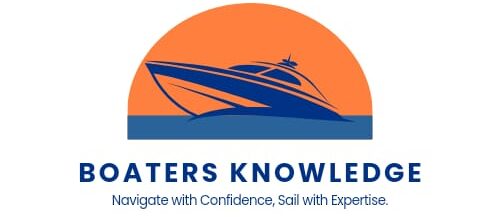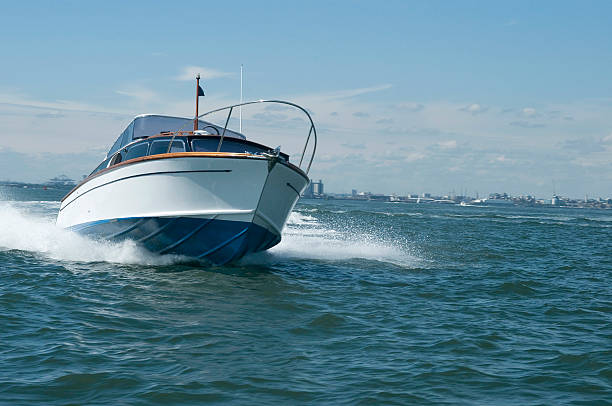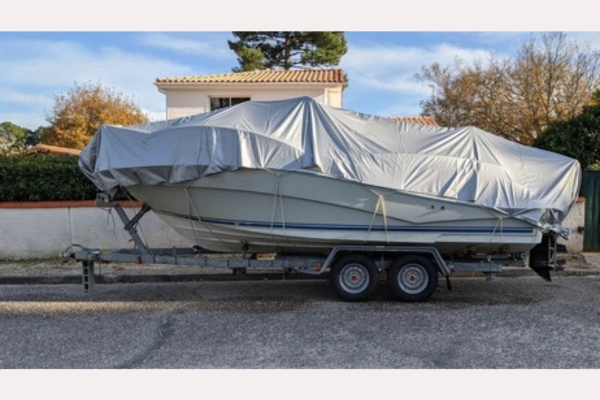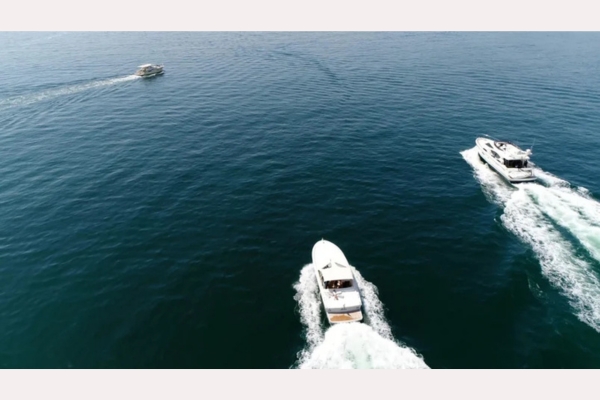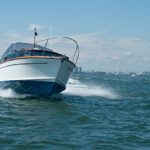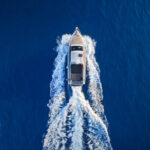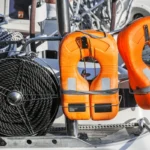Boating is an exciting activity that offers adventure, relaxation, and an opportunity to explore beautiful waterways. If you’re new to boating, the experience can feel a bit overwhelming. However, with the right knowledge and preparation, you can navigate the waters confidently and safely. This guide covers 10 essential boating tips for beginners to help you make the most of your boating journey.
Learn the Basics of Boating
Before heading out on the water, it’s crucial to familiarize yourself with the fundamentals of boating. Taking a boating safety course is a great first step, as it provides essential knowledge about navigation rules, safety practices, and emergency procedures. These courses often include practical demonstrations that build your confidence and competence. Additionally, many states require a boating license or safety certification, so it’s important to check your local regulations to ensure you comply with the law.
Beyond formal training, there are plenty of online resources, tutorials, and local boating organizations that can help you get started. These resources can teach you how to handle common situations on the water, such as docking, maneuvering, and understanding basic boating etiquette. The more you learn, the better prepared you’ll be to enjoy a safe and enjoyable experience.
Checklist for Learning Boating Basics:
- Enroll in a certified boating safety course.
- Study the “rules of the road” for boating.
- Familiarize yourself with boating terminology and signals.
- Practice basic maneuvers in a controlled environment.
Understand Boating Safety Rules
Safety should always be your top priority when you’re out on the water. The “rules of the road” for boating include guidelines for right-of-way, speed limits, and safe distances from other vessels. Understanding these rules ensures that everyone shares the waterways responsibly and reduces the risk of accidents. Equipping your boat with essential safety gear is just as important. Items like life jackets for all passengers, a fire extinguisher, a first-aid kit, and a whistle or horn can be lifesavers in emergencies.
Overloading your boat with passengers or gear can compromise stability and lead to accidents, so always respect your vessel’s capacity limits. Also, make sure every passenger knows where the safety equipment is stored and how to use it. A well-prepared crew is a safer crew, and taking the time to review safety rules can make all the difference in an emergency.
Checklist for Boating Safety Rules:
- Equip your boat with life jackets for all passengers.
- Carry a fire extinguisher, first-aid kit, and signaling devices.
- Understand right-of-way rules and speed limits.
- Avoid overloading the boat with passengers or gear.
Perform a Pre-Departure Checklist
Preparation is key to a successful boating trip, and a pre-departure checklist ensures you’re ready for anything. Start by checking the weather forecast to avoid venturing out in unsafe conditions. Inspect your boat’s engine, fuel levels, and navigation lights to confirm that everything is in working order. Verify that you have all required safety equipment onboard and easily accessible.
Having a physical checklist can be a lifesaver, especially when you’re new to boating. It helps you stay organized and ensures nothing is overlooked. Even experienced boaters benefit from a pre-departure routine to catch potential issues before they become problems on the water. Making this a habit will give you peace of mind and set you up for a smooth trip.
Pre-Departure Checklist:
- Check the weather forecast.
- Inspect the engine, fuel, and navigation lights.
- Ensure all required safety gear is onboard.
- Inform someone onshore of your trip plan.
Know Your Boat Inside and Out
Every boat is different, and it’s essential to understand the specific features and controls of your vessel. Spend time reading the owner’s manual and familiarize yourself with key systems like steering, throttle, and anchoring mechanisms. Practice basic maneuvers such as docking, turning, and reversing in a controlled environment like a marina or calm bay before venturing into more challenging waters.
Even experienced boaters need time to adjust to a new vessel. Don’t assume that prior knowledge will automatically translate to a different boat model. Taking the time to get to know your boat will not only make you a more confident operator but also help you respond effectively in unexpected situations.
Checklist for Knowing Your Boat:
- Read the owner’s manual thoroughly.
- Locate key systems like steering and throttle.
- Practice docking and maneuvering in calm waters.
- Understand your boat’s capacity and limitations.
Dress for the Occasion
Dressing appropriately can significantly enhance your boating experience. Layering your clothing is a smart strategy, as weather conditions can change quickly on the water. Lightweight, moisture-wicking fabrics are ideal for warm days, while waterproof outer layers can protect you from sudden rain or spray. Non-slip, water-resistant footwear is another must to ensure safety and comfort.
Sun protection is also critical, as sunlight reflects off the water and increases your exposure to harmful UV rays. Pack sunscreen, sunglasses, and a hat to protect your skin and eyes. Additionally, consider bringing a waterproof bag to store essentials like your phone, wallet, and extra clothes, keeping them dry and secure throughout your trip.
Checklist for Boating Attire:
- Wear layered, weather-appropriate clothing.
- Use non-slip, water-resistant footwear.
- Bring sun protection: sunscreen, sunglasses, and a hat.
- Pack a waterproof bag for valuables.
Practice Proper Anchoring
Anchoring is a fundamental skill every boater should master. Choosing the right spot to drop anchor is just as important as the technique itself. Look for areas with minimal traffic and avoid underwater hazards like rocks or coral reefs. Let out enough anchor line—typically seven to ten times the depth of the water—to ensure the anchor holds securely.
Improper anchoring can lead to your boat drifting, which can be dangerous in crowded or restricted areas. Never tie the anchor line to the stern of the boat, as this can cause instability and even lead to capsizing. With practice, you’ll develop the confidence to anchor safely and enjoy worry-free stops along your journey.
Checklist for Proper Anchoring:
- Select a safe, low-traffic location.
- Avoid underwater hazards like rocks.
- Use 7-10 times the water depth in anchor line.
- Secure the anchor line to the bow, not the stern.
Be Aware of Weather Conditions
Weather plays a significant role in boating safety and enjoyment. Always check the forecast before setting out, and stay alert to changes in the sky while you’re on the water. Sudden shifts in wind, temperature, or cloud cover can indicate an approaching storm. If you notice any signs of bad weather, it’s best to head back to shore as quickly as possible.
Investing in a marine VHF radio is a wise choice for staying informed about weather alerts and communicating with other boaters or emergency services if needed. By staying weather-aware, you can avoid potentially hazardous situations and ensure a smoother experience.
Checklist for Weather Awareness:
- Check detailed weather forecasts.
- Monitor changes in wind and sky conditions.
- Carry a marine VHF radio for updates.
- Plan to return to shore at the first sign of bad weather.
Maintain a Safe Speed
Operating your boat at a safe speed is essential for the safety of everyone on board and those around you. Adjust your speed according to the conditions, such as visibility, water traffic, and proximity to shore or docks. Slowing down in crowded waterways or during poor visibility helps prevent accidents and ensures smoother navigation.
Large wakes created by excessive speed can disturb other boaters, damage smaller vessels, and erode shorelines. Be mindful of the impact your boat has on the environment and others around you. By maintaining a responsible speed, you’ll contribute to a safer and more enjoyable boating community.
Checklist for Safe Speed:
- Adjust speed based on visibility and water traffic.
- Slow down in crowded or narrow areas.
- Avoid creating large wakes near other vessels.
- Respect speed limits in designated zones.
Stay Hydrated and Bring Snacks
Boating can be physically demanding, especially on hot days. Staying hydrated is essential to keep your energy levels up and prevent heat-related illnesses. Pack plenty of water and easy-to-eat snacks to sustain you throughout the day. Avoid consuming alcohol if you’re operating the boat, as it impairs judgment and reaction time.
Planning for unexpected delays is also important. Bring more food and water than you think you’ll need to ensure you’re prepared for any situation. This simple precaution can make a big difference if your trip lasts longer than anticipated.
Checklist for Staying Hydrated:
- Pack enough water for everyone on board.
- Include easy-to-eat, non-perishable snacks.
- Avoid alcohol if you’re operating the boat.
- Bring extra provisions for unexpected delays.
Respect Wildlife and the Environment
One of the joys of boating is experiencing nature up close, but it’s crucial to minimize your impact on the environment. Wildlife can be sensitive to human activity, so always keep a safe distance from animals you encounter. Reduce your speed in designated no-wake zones to protect marine habitats and avoid disturbing the ecosystem.
Proper waste management is equally important. Bring a designated trash bag for all your waste, and never throw anything overboard. Fishing lines, bait, and plastics can harm marine life and disrupt natural habitats. By practicing eco-friendly boating habits, you ensure that waterways remain pristine for future generations to enjoy.
Checklist for Environmental Responsibility:
- Maintain a safe distance from wildlife.
- Reduce speed in no-wake zones.
- Dispose of trash responsibly—bring it back to shore.
- Avoid anchoring in sensitive areas like coral reefs.
Conclusion
Boating is an incredible adventure that connects you to nature and provides countless moments of joy. For beginners, understanding the basics—from safety rules to proper preparation—is essential to ensure a safe and enjoyable experience. By following these tips, you’ll navigate your boating journey with confidence, while respecting the environment and the boating community.
Whether you’re exploring serene lakes or the vast ocean, remember that preparation, awareness, and respect are key to successful boating. Make every trip memorable by prioritizing safety and embracing the learning process.
Discover Your Dream Boat with Fly Yachts
Looking to elevate your boating experience? Fly Yachts is your trusted broker in Florida, offering a wide range of luxury boats and yachts to suit every adventurer. With unparalleled expertise and a commitment to excellence, Fly Yachts ensures that finding your dream boat is smooth sailing.
Visit us: www.flyyachts.com
Contact us: 954-633-4878
Location: 130 SE 29th Street, Fort Lauderdale, Florida 33301
Set sail with confidence and style—Fly Yachts has you covered!
